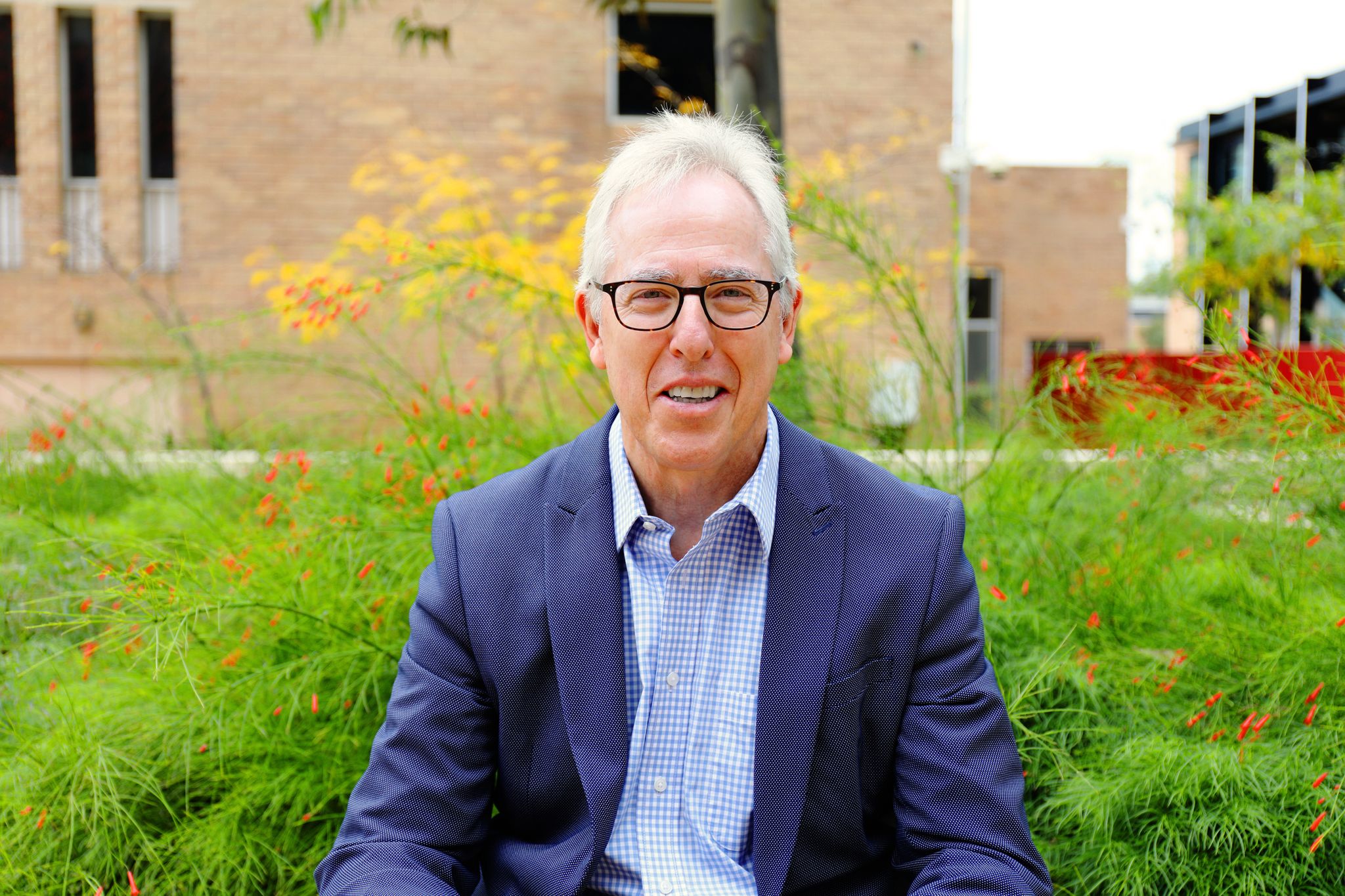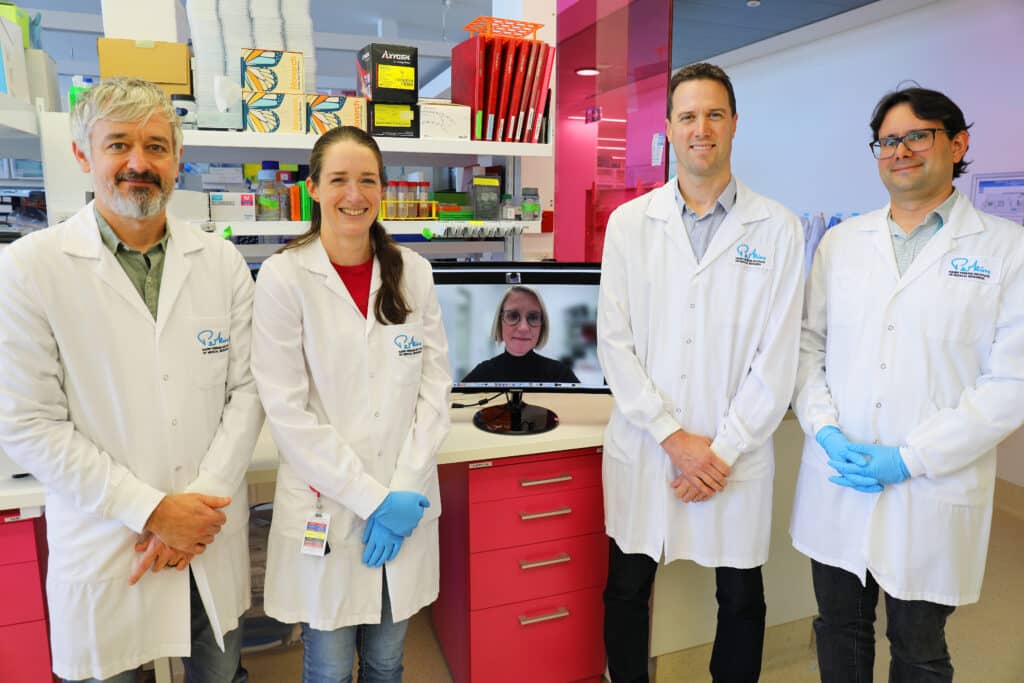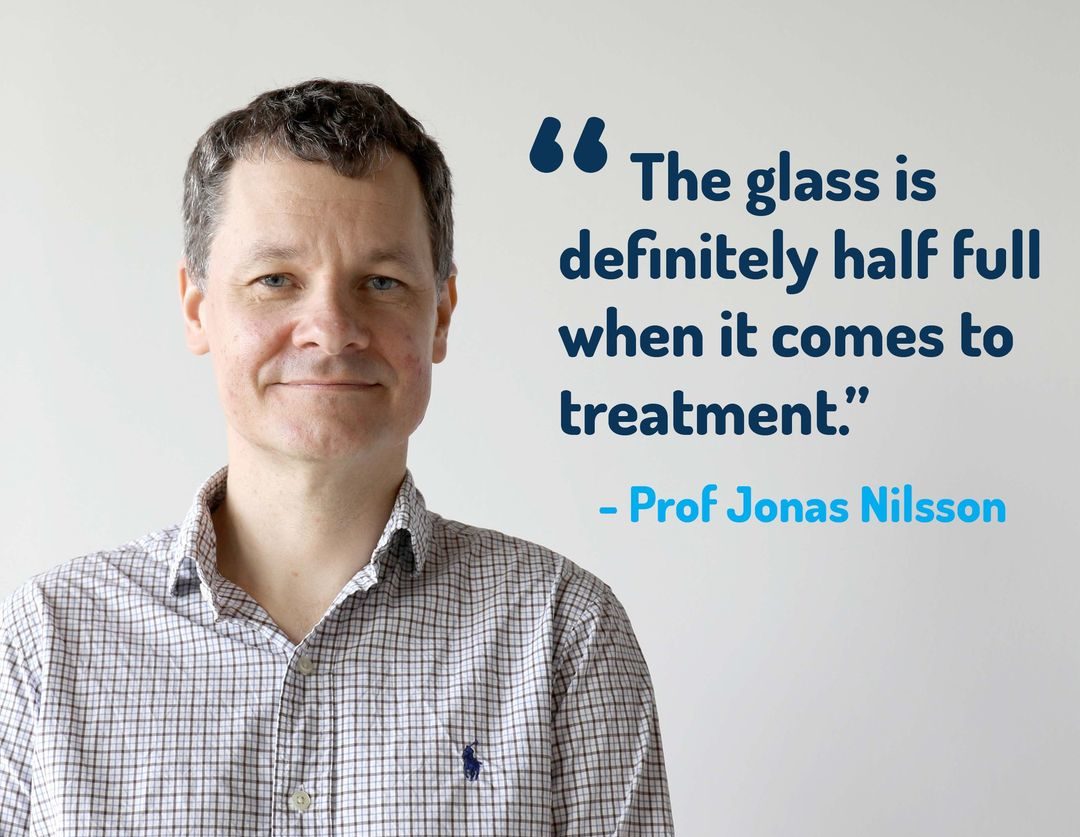
Prof Peter Leedman AO, Director of the Harry Perkins Institute of Medical Research, provided the following end-of-year observations about the outlook for medical research in WA to The West Australian, published on Friday, 16 December 2022. This article may be published behind a paywall.
The end of one year and the start of the next is a great time to celebrate success and share reasons for hope.
It’s a time when we want to, and should, reflect on the uplifting, the sustaining and the simply wondrous.
This year, in WA, there were two remarkable teams whose work give us all something to feel good about:
First the success.
Professor Ryan Lister is a brilliant young West Australian researcher.
In 2009 he was recognised for generating the world’s first comprehensive maps of the human epigenome, which are molecular instructions attached to DNA that contribute to making cells different from each other, for example, why it is that a skin cell is different from a brain cell.

(L-R) Dr Chuck Herring, Dr Rebecca Simmons, Dr Saskia Freytag (on screen), Prof Ryan Lister and Dr Daniel Poppe.
We all start as a single cell, and that cell multiplies as we grow into an adult with approximately 38 trillion cells and hundreds of different types of cells.
The instructions for making cells different from each other is encoded into every single cell and our epigenome contributes to controlling how our different cell types are established and which role they are given.
These cell instructions have a huge influence on our development and, significantly, on the causes of disease. Now Professor Lister has achieved something else extraordinary.
With his team at the Harry Perkins Institute of Medical Research he has developed the world’s first map showing the gene activity in the many different types of cells in the frontal cortex of the human brain, from before we are born until we reach adulthood.
The brain is constantly changing as we grow, and by having this map of normal brain cell development researchers will now be able to identify how early changes in the brain during development can contribute to neurological and psychiatric disorders such as schizophrenia, and the altered cells present in brain cancers.
These maps allow experts to predict which cell types are affected by specific diseases and at what age they present or contribute to disease formation.
Before now, there was a major gap in our knowledge of gene activity and the factors controlling it in the brain between birth and adulthood.
The world now has a reference map to help identify when brain cells are abnormal, and we will be able to identify how and when those changes might contribute to brain disorders.
This is ground-breaking work that will make an enormous difference to understanding how our brain normally develops and how this can be disrupted in diseases. It will help researchers develop better models of brains in a dish to understand and treat disease.
It is an inspiring success story.
The next story gives hope for patients with the deadly skin cancer, melanoma.
An entirely different research team at the Perkins plans to take immune cells from a patient’s melanoma skin cancer, ‘super charge’ them outside the patient’s body and then reintroduce them in enormous numbers to help the patient fight off the cancer.
This too is ground-breaking work.
 Professor Jonas Nilsson came to Perth from Gothenburg, Sweden, two years ago and among other research, he is focusing on finding a treatment for the melanoma patients who do not respond to a type of treatment called immunotherapy, which benefits about half of all patients whose melanoma has spread.
Professor Jonas Nilsson came to Perth from Gothenburg, Sweden, two years ago and among other research, he is focusing on finding a treatment for the melanoma patients who do not respond to a type of treatment called immunotherapy, which benefits about half of all patients whose melanoma has spread.
Professor Nilsson is working with Perth clinicians and patients who have given their consent and is taking samples of tumours straight from theatre to the laboratory.
There the team extracts the patient’s immune cells from the tumour and using a bioreactor brought to Perth from Sweden, re-engineers a particular part of the patients’ immune cells so they multiply thousands of times. This greatly amplified immune solution is then introduced back into the patient’s immune system to attack the cancer.
Professor Nilsson hopes to offer this treatment to patients with metastatic melanoma in Perth next year.
